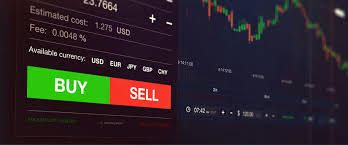
What is Maximum Leverage?
In the world of trading, particularly in forex and cryptocurrency markets, the term „maximum leverage“ is frequently discussed. Maximum leverage refers to the highest multiplier that can be applied to an investor’s capital when trading. For instance, if a broker offers a leverage of 100:1, a trader with $1,000 can control a position worth $100,000. This means that leverage amplifies both potential profits and risks, making it an essential concept for traders to understand. what is maximum leverage Minereum is one of the many platforms where traders can experience the implications of leverage first-hand, allowing them to dive deep into the mechanics of this vital trading aspect.
The Mechanics of Leverage
Leverage in trading allows investors to increase their exposure to the market without having to commit the full amount of capital. The manipulation of leverage occurs through margin accounts, where a broker lends money to traders to open positions that are larger than their actual investment. This functions through a margin requirement, which is the amount of capital a trader must hold in their account to use a certain amount of leverage.
For example, with a 50:1 leverage ratio, if a trader wants to open a $10,000 position, they would need to put up only $200 as margin (10,000 / 50 = 200). This capability can be an absolute game changer in the trading landscape—allowing traders to maximize their potential returns on capital invested.

Pros and Cons of Maximum Leverage
While maximum leverage can provide significant advantages, it also comes with substantial risks that need to be understood. Here are some pros and cons:
Advantages of Maximum Leverage
- Increased Profit Potential: With a higher leverage ratio, even small market movements can result in substantial profits. This can be especially appealing in volatile markets like cryptocurrency.
- Access to Greater Capital: Traders can access a larger trading capital pool without needing to invest all the funds upfront.
- Short Selling Opportunities: Leverage often allows for short selling, providing opportunities to profit in declining markets.
Disadvantages of Maximum Leverage
- Higher Risk of Loss: Just as leverage amplifies gains, it also amplifies losses. Traders can quickly lose more than their initial investment, leading to margin calls.
- Emotional Stress: The pressure of trading with high leverage can lead to emotional decision-making, which can adversely affect trading performance.
- Broker Restrictions: Brokers set maximum leverage limits to protect themselves and their investors, which may restrict some trading strategies.

How to Use Maximum Leverage Responsibly
Using maximum leverage responsibly is crucial for sustaining long-term trading success. Here are some tips for doing so:
- Know Your Risk Tolerance: Before using high leverage, assess your risk tolerance and determine how much you are willing to lose.
- Set Stop-Loss Orders: Utilize stop-loss orders to limit potential losses when trades do not go as planned.
- Diversify Your Portfolio: Avoid putting all your capital in one trade. Use leverage across a diversified portfolio to mitigate risks.
- Educate Yourself: Understanding market movements, economic indicators, and other influencing factors can help you make informed trading decisions.
Conclusion
Maximum leverage can be an essential tool for traders seeking to increase their market exposure and potential profits. However, it is equally critical to approach leverage with caution due to the risks involved. Proper education, risk management strategies, and a sound understanding of market dynamics can help traders navigate the complexities of leverage successfully. As the trading landscape continues to evolve, leveraging tools and resources like Minereum can further enhance a trader’s knowledge and capabilities within this domain.